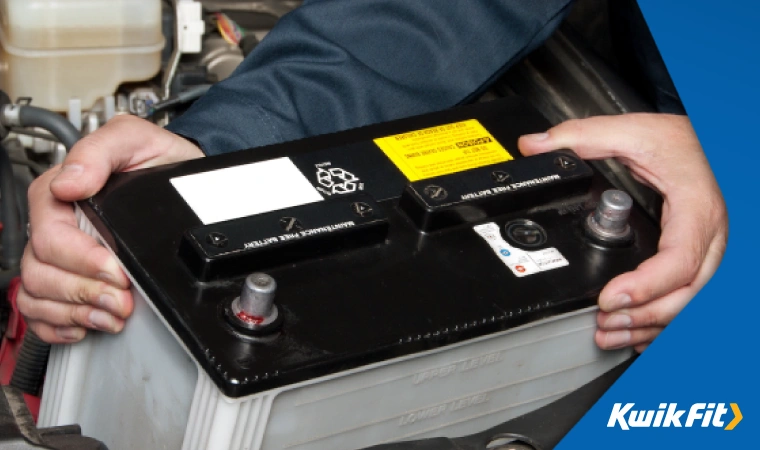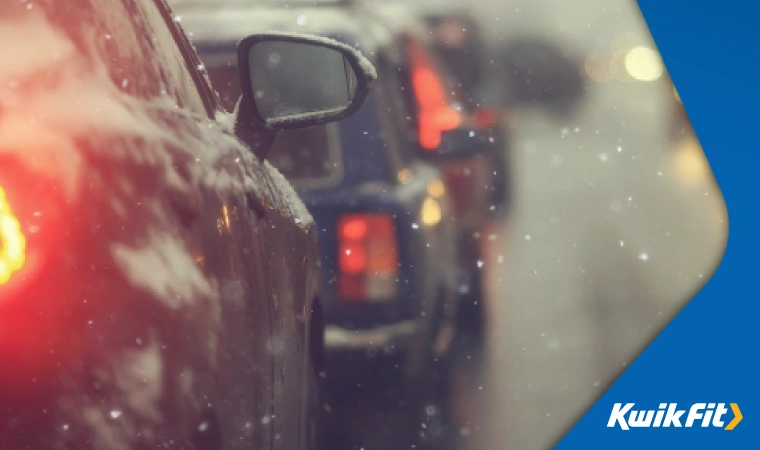Is Your Car Battery Ready for Winter?
Jack Dreyer | Monday 11th November 2024 11:00am

In the repeated words of a certain popular TV series, winter is coming. The question is, have you prepared your car for winter? Itís easy to assume that winter doesnít require any extra attention for your vehicle, but the truth is, itís one of the toughest seasons for cars. Skipping a winter check-up can lead to unexpected issues.
A startling 29,711 serious injuries were reported due to road traffic accidents in 2023, with poor car maintenance contributing to a much larger number of overall collisions. Icy roads, freezing temperatures, and reduced daylight all create unique challenges for vehicles. Ensuring your car is winter-ready can significantly improve safety on the road and prevent breakdowns during the colder months.
Here are a few things to keep an eye on this winter so youíre not caught out.
Why winter tyre checks are essential
The weather throughout the winter days tends to cycle between really cold and moderate. This variation in temperature causes the rubber in tyres to expand and contract which, in turn, can lead to the rubber splitting or changes in tyre pressure.
Be sure to check the tread depth on all of your tyres. This is a leading cause of collisions during winter, as excessively-worn tyres lead to aquaplaning. Now, even though the legal limit is 1.6 mm, consider how deep most puddles are Ė usually much deeper than 1.6 mm, right? So be safe, check your tyres regularly, and get them changed at 3mm instead. This significantly improves your carís grip on the road, making it safer for everyone.
How to check and maintain brakes in winter
The stopping distance is already increased significantly in wet and icy weather, so pair this with worn brakes and itís a recipe for disaster. Make sure that youíre aware of how your brakes are behaving: if your car pulls to one side, your brakes feel spongy or unresponsive, or your brakes make strange noises, book an inspection with your local garage as soon as possible.
Itís worth remembering that if youíre having trouble with your brakes, you should try to avoid driving at fast speeds.
Car battery tips for cold weather
The cold weather makes it harder for batteries to work, because batteries rely on chemical reactions Ė reactions which are slowed when in a colder material.
As such, if youíve got a battery thatís already on its way out, the turn to cold weather can be the final kicker. If your car takes a while to start, stalls unexpectedly, or stalls shortly after starting when you donít apply the accelerator pedal, then itís time to have your battery replaced.
Luckily, changing batteries is a relatively quick procedure and new car batteries are usually fairly affordable. Getting your battery inspected and swapped at your local Kwik Fit is a straightforward and relatively inexpensive job.

Keeping your engine winter-ready
In colder weather, your engine needs to be warm enough to provide an environment in which the fuel can be burned. When in cold conditions, it has to work significantly harder for the same performance, so, to support the engine during these challenging conditions, ensure all engine fluids are topped up, especially antifreeze. Antifreeze prevents the water in the cooling system from freezing, which can cause damage to the radiator, hoses, and even the engine block itself if the liquid freezes and expands.
How to ensure your car lights are safe for winter
This should go without saying, but make sure your lights all work properly! It feels like it gets dark as soon as we wake up when itís winter, so properly-functioning headlamps, brake lights, fog lights, and indicators are absolutely essential. Not only can you get fined for driving with a broken light, but it can be really dangerous.
Itís a good idea to carry a few spares in your car, just in case a light does happen to blow.
Essential items to carry for winter driving
Making sure the parts of your car are fully-functioning keeps you in a great place to drive safely in winter. But itís worth planning for things such as frost, snow, and low visibility. Packing a de-icer, an ice scraper, and a torch will come in really handy in a pinch. Itís certainly no fun trying to get ice off a windscreen without the proper tools.

Winter driving hazards to look out for
Other than the obvious risk of aquaplaning in wet conditions, the less obvious risk in Winter is ĎBlack Iceí. This is ice thatís the same colour as the road, making it difficult or impossible to spot. It forms when rain or mist freezes on the cold road surface, often in shaded or exposed areas, such as bridges and overpasses, where road temperatures are lower.
This is surprisingly common in the frosts of mid-winter, especially during early mornings and late evenings when temperatures drop sharply. Itís crucial to drive at a speed and stopping distance that can account for unexpected changes in road grip, as well as avoiding sudden braking or aggressive steering.
Using winter tyres, which are designed for better grip in cold and icy conditions, can also significantly reduce the risk of sliding on black ice.
Get your car winter-ready with Kwik Fit
If youíre concerned about how your car will handle during the winter weather, visit your local Kwik Fit centre, where our friendly team can advise on the best steps to keep you safe and prepared for the season. With our free vehicle safety check, weíll ensure your carís key components are ready for the road, helping you avoid unexpected issues in colder conditions. For more tips and advice on winter driving, check out our blog section, where youíll find everything you need to stay safe and prepared this winter!
When you turn the keys in the ignition, the starter motor needs a lot of amperes to start itself. Normally, the battery can provide the right amount without a second thought, but if your battery is cold and/or old, it might not work so well.
Temperatures below freezing can reduce the capacity of any battery ó new or old ó causing it to not supply the starter motor properly.
In the summer, however, temperatures are more favourable and mild. In British summers especially, the warm temperatures are conducive to strong battery health.
In extremely cold conditions, the battery can actually freeze since it holds its charge using a liquid electrolyte solution. In most cases, though, low temperatures merely reduce the ability of the electrolyte solution to transfer power.
Any facts, figures and prices shown in our blog articles are correct at time of publication.
Featured Articles
Is it Illegal to Drive With One Headlight?
Saturday 19th July 2025
Wondering if itís illegal to drive with one headlight? Learn about the safety risks and penalties of illegal blown bulbs and why you should fix them promptly.
Air Con in EVs & Hybrids: Experts Answer Your Questions
Monday 30th June 2025
Does air con drain EV batteries? Can you use the air con while charging an electric car? Find out the answers to these questions & more from Kwik Fitís experts.
Why Is Your Car Making a Noise? Fixes & Tips
Friday 13th June 2025
When your car starts making unexpected noises, it can certainly be quite disconcerting; it may be nothing to worry about, but hereís what you need to know.









